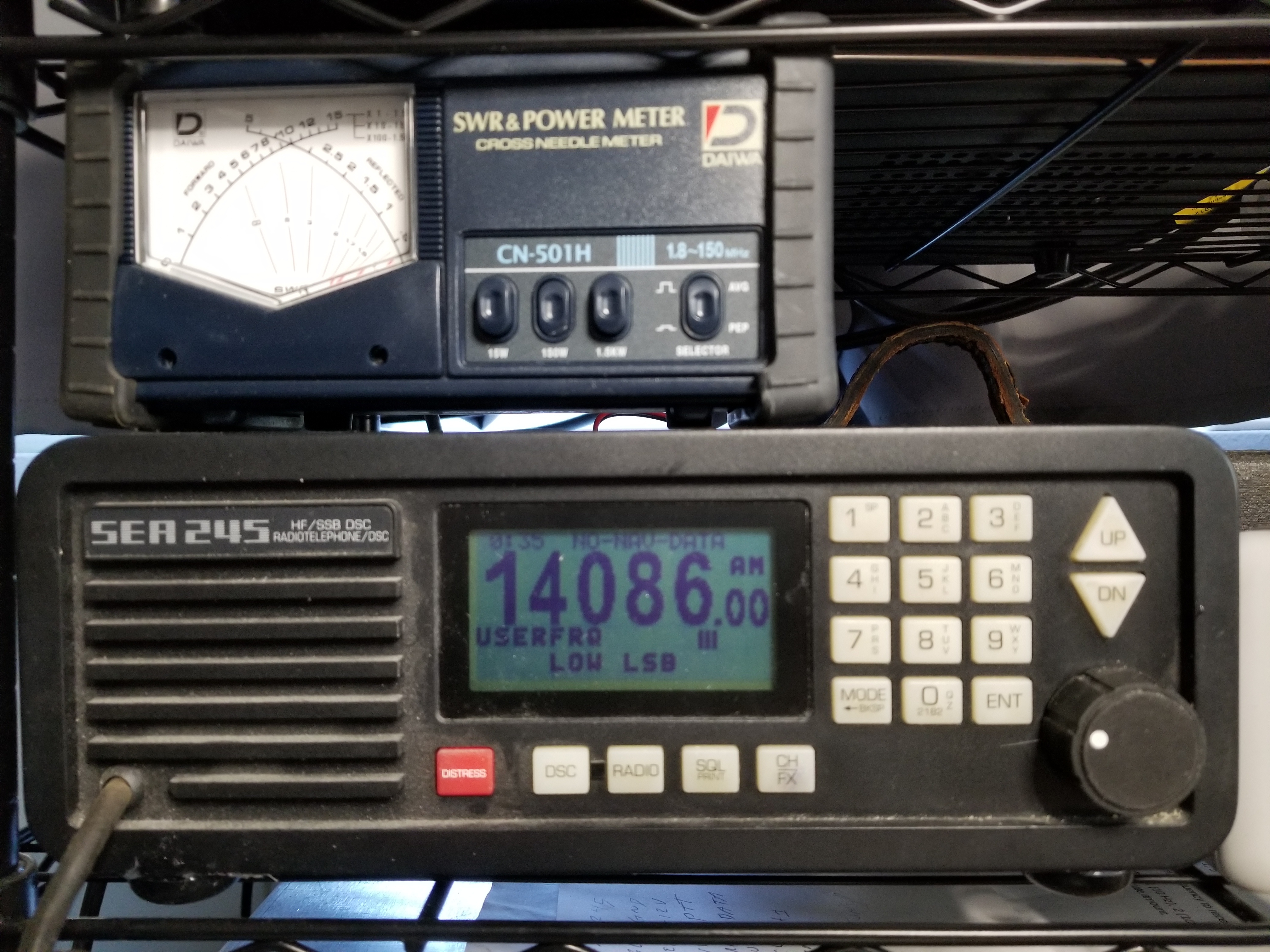Seacom SEA 245 HF Transceiver

SEA 245 Notes
- Scanning
- Program Scan - Select frequency, mode, etc. [Radio], 7, bin number,
[enter], 1 (overwrite existing bin), [enter], alphanumeric name (default is
userfreq), [enter], 1 (scanning mode voice), [enter]. If first three characters
of name is different from that of the previous bin, this is the start of a new
scan group.
- Scan Mode - Determines whether a scan leaves an active channel after the
hang period or, instead, stays on the channel until it is inactive.
Continuous (stay on active channel) - [Radio], 1,3,1
Stop and Go - [Radio], 1, 3, 2
- Start Scan - Select a bin number in a scan group by keying in bin number
followed by [enter] (such as 1, [enter]). Key in [Radio], 8 to start scan. PTT
stops a scan.
- Current Scan
- 3.586 MHz LSB, RTTY
- 3.800 MHz LSB, Voice
- 7.086 MHz LSB, RTTY
- 7.200 MHZ LSB, Voice
- 14.086 MHz LSB, RTTY
- 14.200 MHz USB, Voice
- 21.086 MHz LSB, RTTY
- 21.300 MHz USB, Voice
- 28.086 MHZ LSB, RTTY
- 29.000 MHz USB, Voice
- Manual Channel Select - Key in channel, hit Enter
- Frequency Response - It was noted that there is substantial high frequency rolloff, especially
with 850 Hz shift RTTY. Frequency response measurements were made by measuring the transceiver power into a dummy load
while driving the balanced audio SEABUS with different levels of audio at varying frequencies. Audio above 0 dBm does
not yield higher power at any frequency. All measurements were made at 14.086 MHz LSB.
- Fan Control - I have been looking for a simple way to sequence
the Dentron Clipperton L amplifier
with the transceiver to avoid hot switching in the amplifier bypass
relay. The transceiver
PA Board
schematic shows K11 as the antenna relay. PERHAPS the amplifier
relay could be switched in sync with K11. The
Bill of
Materials shows K11 has a 10 ms operate time. I don't know what
the operate time of the RF bypass relay in the
Dentron Clipperton L is. Further,
K11 is on the power amplifier board which is under another board
(see photo). It
would be difficult to access. Another possibility is using the fan
control since the heat sink fans are external.
This scope photo shows the timing between
RF output and the fan being activated. The yellow trace is the low
side of the fan. It is pulled down by transistors in the SEA245.
Apparently the transistor is not saturated. The blue trace is the
RF envelope. It appears the fan is activated about 5 ms before the RF
output. This is probably not sufficient advance timing to avoid hot
switching in the amplifier RF bypass relay.
This scope image shows the carrier drop (blue), and the fan
disable (yellow). The fan is disabled about 900 ms after the carrier
drops. That would be fine, but the carrier up sequence is probably too
short.
SEA 245 Documentation
Seacom SEA 245. This runs 150W CW or SSB between 1.6 MHz and 30 MHz. It is a dual conversion system with the first IF at 45 MHz and the second at 40 kHz.
The 40 kHz IF is run through an A/D and then into a DSP where final filtering and demodulation are handled in a DSP. On the transmit side, the DSP generates the SSB (or other) signal at 40 kHz. It is then
upconverted to 45 MHz, and then to the final transmit frequency. The high first IF provides good image rejection with broad band RF filters. In fact, the same band pass filters that are used on the
transmit side are used on the receive side.
